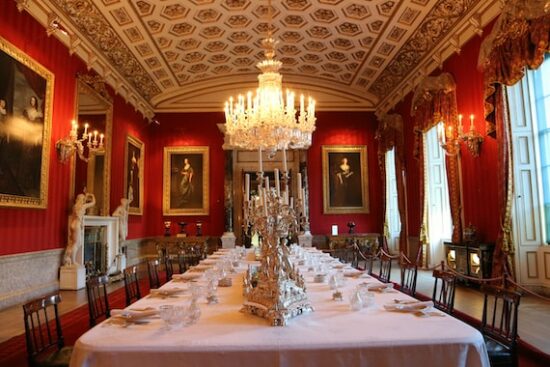Introduction
Jane Austen’s classic novel Pride and Prejudice, with its captivating plot, endearing characters, and insightful examination of society and love, continues to enthrall readers. Published in 1813, the novel has since become a classic of English literature, celebrated for its wit, social commentary, and enduring themes. In this article, we will delve into the various aspects of Pride and Prejudice, analysing its plot, characters, themes, writing style, setting, historical context, and its impact on readers and the literary world.
Plot and Storyline
Pride and Prejudice follows the Bennet family, particularly the second eldest daughter, Elizabeth Bennet. Set in rural England during the early 19th century, the novel explores the social dynamics and courtship rituals of the time. The story begins with the arrival of Mr. Bingley, a wealthy gentleman, in the neighbourhood, which sparks excitement and anticipation among the Bennet sisters and their mother. Mr. Bingley’s close friend, Mr. Darcy, also accompanies him but initially comes across as proud and aloof.
As the plot unfolds, we witness the complex interactions between the characters, including the witty and independent Elizabeth, her headstrong and romantic sister Jane, and their three younger sisters—Mary, Kitty, and Lydia. The Bennet family’s modest social status adds to the challenges they face in finding suitable partners. The novel explores themes of love, marriage, social class, and the consequences of pride and prejudice.
Key events include the initial courtship between Mr. Bingley and Jane, their subsequent separation due to miscommunications, and the gradual development of feelings between Elizabeth and Mr. Darcy, despite their initial disdain for each other. The plot takes several unexpected turns with the elopement of Lydia with Mr. Wickham, a charming but untrustworthy officer, which further complicates the relationships and reputation of the Bennet family. Ultimately, the novel concludes with the triumph of love over societal expectations and the growth of characters through self-reflection and self-awareness.
Characters
Jane Austen’s Pride and Prejudice boasts a rich ensemble of well-crafted characters who contribute to the novel’s depth and complexity. Elizabeth Bennet, the protagonist, is a strong-willed and intelligent young woman who challenges the conventions of her time. Her character embodies wit, independence, and a keen sense of justice. Mr. Darcy, initially perceived as arrogant and distant, undergoes significant character development, revealing a man of integrity, loyalty, and deep affection. Their relationship forms the heart of the novel, as they navigate societal expectations, personal prejudices, and their own flaws.
The supporting cast includes Jane Bennet, Elizabeth’s gentle and kind-hearted sister, whose romantic disposition contrasts with Elizabeth’s pragmatism. Mr. Bingley, a cordial and amiable gentleman, represents the ideal suitor in the eyes of society. Other notable characters include the irrepressible Lydia, whose impulsive actions create tension and drama, and the witty and sharp-tongued Mr. Bennet, Elizabeth’s father, who provides comic relief and insightful commentary on the social intricacies of the time.
Themes and Symbols
Pride and Prejudice explores various themes that continue to resonate with readers today. One of the central themes is the examination of societal expectations and the constraints they impose on individuals. Austen critiques the rigid class system of the time, highlighting the importance of personal virtues and character rather than mere wealth or social standing. The theme of love and marriage is also prominent, as the characters grapple with the tension between personal happiness and societal pressures. Additionally, the novel delves into the destructive nature of pride and prejudice, emphasizing the need for self-awareness and the dangers of making hasty judgments.
Austen employs symbols throughout the novel to deepen its meaning. The recurring symbol of the picturesque countryside, with its idyllic landscapes and serene beauty, represents a contrast to the artificiality of societal norms. Similarly, the symbolism of letters and written communication serves as a vehicle for conveying hidden truths and revealing the characters’ innermost thoughts and emotions.
Writing Style
Jane Austen’s writing style in Pride and Prejudice is characterized by its elegance, wit, and keen observation of human nature. Her prose is precise and polished, and she employs irony and satire to expose the follies and hypocrisies of her society. Austen’s use of free indirect discourse allows readers to gain insight into the characters’ minds, blurring the line between narration and their internal thoughts. This technique enhances the reader’s engagement and understanding of the characters’ motivations and desires.
Austen’s language is marked by its subtlety and restraint, reflecting the social decorum of the time. Through her precise choice of words and dialogues, she conveys the nuances of social interactions and the complexities of human relationships. Her clever dialogues andlively banter add depth to the characters and provide moments of humor amidst the social commentary.
Setting and Atmosphere
Pride and Prejudice is set in the English countryside during the Regency era, a period known for its strict social customs and hierarchical structure. The setting plays a crucial role in shaping the tone and atmosphere of the novel. The tranquil beauty of the countryside, with its sprawling estates and picturesque landscapes, provides a backdrop for the characters’ lives and interactions.
The contrast between the natural beauty of the setting and the artificiality of societal norms underscores the novel’s themes. Austen skillfully utilizes the setting to create a sense of intimacy and constraint, as characters navigate the expectations and limitations imposed by their social class. The atmosphere is punctuated by social gatherings, balls, and visits, where the characters engage in polite conversation, gossip, and subtle power plays.
Historical, Social, or Political Context
Pride and Prejudice offers valuable insights into the historical, social, and political context of early 19th-century England. The novel reflects the Regency era, a time of significant social changes, as the landed gentry and aristocracy held sway over society. Austen explores the role of women within this context, highlighting their limited options and the importance of marriage as a means of securing social status and financial security.
The novel also touches upon themes of inheritance, entailment, and the complexities of property ownership, illustrating the social and economic dynamics of the time. Furthermore, Austen subtly critiques the prevailing social norms and expectations, questioning the values of a society that places undue emphasis on wealth, class, and appearances.
Impact and Reception
Pride and Prejudice has had a profound impact on literature and continues to be celebrated for its enduring relevance and universal themes. Since its publication, the novel has garnered widespread acclaim and has been recognized as one of Austen’s finest works. Austen’s keen observations of human nature, her wit, and her exploration of love and societal conventions have earned her a place among the greatest writers in the English language.
The novel’s reception among readers and critics has been overwhelmingly positive. Pride and Prejudice has won the hearts of generations of readers with its relatable characters, engaging storyline, and astute social commentary. It has been adapted into numerous film and television adaptations, further cementing its place in popular culture.
Pride and Prejudice’s cultural significance extends beyond its literary merits. The novel has influenced subsequent works of literature, serving as a template for romantic comedies and inspiring countless adaptations, retellings, and spin-offs. It remains a beloved classic that continues to resonate with readers of all ages and backgrounds.
Final Conclusions
In conclusion, Pride and Prejudice by Jane Austen is a masterpiece of English literature that stands the test of time. Its compelling plot, well-developed characters, insightful themes, and Austen’s impeccable writing style combine to create a novel that is both entertaining and thought-provoking. Through her exploration of love, marriage, social class, and human nature, Austen casts a critical eye on the society of her time, challenging conventions and illuminating the universal struggles of individuals in their pursuit of happiness and self-discovery.
Pride and Prejudice’s enduring popularity and cultural impact are a testament to its timeless appeal. As readers continue to be captivated by Elizabeth Bennet and Mr. Darcy’s journey, the novel serves as a reminder of the power of love, the consequences of prejudice, and the importance of staying true to oneself in the face of societal expectations. Jane Austen’s legacy lives on through this remarkable work, reminding us of the enduring power of great literature.
Sources
Pride and Prejudice – Wikipedia
Pride and Prejudice | Summary, Characters, Author, Book, Movie, Quotes, & Facts | Britannica






